7 Radio Broadcasting, Podcasting, and Impact on Popular Culture

“We thought we were doing this little experiment, and it became this huge thing.”
— Sarah Koenig, host and co-producer of the Serial podcast
Podcasting Echoes the rise of Broadcasting
The Serial podcast is a true crime drama that calls into question the efforts of Adnan Syed’s defense attorney as well as several elements of the case against him. Syed was convicted of murdering his former girlfriend Hae Min Lee in January 1999. The podcast analyzes, among other things, the use of a questionable timeline and questionable witnesses by prosecutors as well as the failure of Syed’s defense attorney to use a witness who could have provided him with an alibi. The conviction was overturned in 2022, then reinstated in 2023. Listeners are split on whether Syed is guilty. Among other issues, the podcast questions whether Syed’s alibi would hold up in court. The story was released in serial fashion (that is, one piece at a time), in the autumn of 2014. Listeners were enthralled. This podcast more than any other helped establish the platform, and advertisers learned that podcasting could be a viable mass medium. The ability to engage with murder mystery stories is not new. Serial dramas have appeared since the early days of mass book publishing, but basing a podcast around a real-life murder adds an element of voyeurism that makes some question the podcast’s social impact. The reporting was journalistically sound, but what happens when online audiences dissect real tragedies?
From the Elizabeth Holmes case covered in podcasts such as Behind the Bastards and The Drop Out to NBC News’ coverage of the 2011 murder of Betsy Faria in The Thing About Pam, scandals and cases are dissected through the podcaster’s research, interviews with guests, and sound clips. Such podcasts are potentially dehumanizing for the story’s subjects even as they show the platform’s potential. The social and cultural reach of podcasts now rivals that of radio. It is a broad reach indeed.
This chapter discusses the history of radio broadcasting including its potential as a tool of propaganda, the relationship between radio and the music industry, the social reach of broadcasting, as well as the rise of podcasting, and the cultural impact of radio.
Radio’s Reach
Radio is more than the music or “talk” you are stuck listening to because your auxiliary cable shorted out. It is a means of transferring great numbers of messages, most of which are created and disseminated by professionals, to large audiences. Radio does more than entertain and inform mass audiences. It enables other industries (such as shipping and delivery services) to work efficiently. The technology serves police and other first responders, as well as various military functions. This is not to mention the cultural aspect. For almost a century. pop music on the radio was the soundtrack of American life. Across the world, people make a tradition of gathering around their radios to experience the World Cup, particularly in areas without reliable satellite television or broadband internet service. Historically, radio was the most reliable medium to experience global events. The power of radio broadcasting is to connect people instantly across vast spaces. As a broadcast medium, it helped shape modern society and culture. Radio brought huge audiences together to listen to the same programs at the same time and made it possible to sell airtime, which would not exist without the medium. In other words, radio created what is now a billion advertising industry out of thin air.
Radio Propaganda
Radio created a market where there had been none, but there is a downside to the reach of broadcasting. Radio’s mass appeal and quick adoption in the developed world made it possible to influence the public opinion of whole populations at once. One of the most disturbing uses of radio was to spread Nazi propaganda before and during World War II. With the technology, the Nazis could reach across national boundaries and try to gain sympathy in German-speaking communities across Europe. The Nazis also made it illegal to listen to broadcasts from other countries, particularly Great Britain. Broadcast technology has the power to influence and mobilize masses of people, but it is important to reiterate the limited effects paradigm (covered in Chapter 3). Several cultural and social forces have to be at play for messages in the mass media to help mobilize people to commit genocide. While radio can be used as a propaganda machine, people still have to believe the propaganda. Mass media broadcasting is a tool. It can be used for good or ill, and the conditions and proclivities of the audience affect the level of influence the broadcast media can exert.
Broadcast Technology
Radio waves can transmit sound and speech. Radio communications have helped direct ships and armies and win world wars. Broadcast radio intended for mass audiences created a need for information that was not present before. With radio, news can be instantaneous. People heard about developments in World War II as they were happening, which was not possible only decades earlier during World War I. Some thought this would bring an end to war because people would be too close to the pain and devastation of large-scale conflict to have the stomach for it. This proved to be an insufficient deterrent.

World-altering promises are made with the introduction of almost every new mass medium. Similar things were promised with the dawn of television and the spread of home internet access. James W. Carey’s 1970 article The Mythos of the Electronic Revolution calls the notion that communication technologies will bring about peace and understanding the “rhetoric of the electrical sublime.” New communication technologies do not lead to social utopias. They are both beneficial and disruptive.
The technology of radio followed the development of the telegraph. The world was already connected. Telegrams communicated complex messages in series of dots and dashes, but by working wirelessly, radio seemed more like magic. In recent generations, the spread of wi-fi internet access and wireless electrical charging give some sense of what it felt like to experience wireless radio for the first time. With the development of small, cheap batteries, the transistor radio brought rock-and-roll wherever the audience wanted to go. Radio made the instantaneous transmission of mass messages portable.
In the early days, though, radio receivers were prohibitively expensive and large. They were pieces of furniture that, for the most part, only wealthy early adopters could afford. David Sarnoff, who led the Radio Corporation of America (RCA) and later NBC, was one of the first to envision commercial broadcasting. He was instrumental in the development of commercial radio receiver production. It was necessary to generate demand first. In the early days of radio, broadcasters tried all sorts of things to make use of this new medium. Plays, opera performances and live music performances were broadcast.
As radio receivers became household items and radio broadcasts became more reliable, radio broadcasters (the large ones in particular) demanded better industry regulation. In the United States, regulation favored commercial outfits over public broadcasting. In other countries like the United Kingdom and France, regulations gave the government more control and responsibility for reaching audiences. To this day, public broadcasting is still more popular and influential in Western Europe than in the United States. In the U.S., regulation of the airwaves by the Federal Radio Commission (FRC) and later the Federal Communications Commission (FCC) helped settle who would broadcast on which channels, but the most powerful broadcast towers in the world are of little use if people do not tune in.
According to Vinylmint (also linked above in reference to David Sarnoff), the marriage of recorded music and radio came after radio had become a popular medium for delivering live music and the Great Depression had killed the value of many record companies. Three developments helped to establish the radio as a popular, immediate, in-home mass medium: the development and promotion of affordable radio receivers, the popularization of radio through broadcasting live music and radio dramas, and the marriage of the recording and radio broadcast industries.
Broadcasting’s Influence on Recorded Music
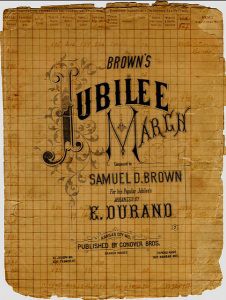
In the early 20th century, sheet music was more popular than recorded music. When sheet music was shared widely, certain songs gained popular status. This is what defined pop music from the 17th through the 19th centuries. The radio was invented around the turn of the 20th century with contributions by Guglielmo Marconi and Nikola Tesla, among others. Then, in the 1940s and 1950s, pop music as we know it was born. Much of pop music in America was first performed by black artists and was then appropriated by white artists. Blues, jazz and rock-and-roll music all originated in black American culture. There is a long history in pop music of artists from a dominant social group taking someone else’s cultural expression and profiting from it.Different types of music have qualified as pop music throughout the 20th century. Jazz, rock-and-roll, psychedelic rock, R & B, disco, glam rock, metal, grunge, rap, electronic dance music and other forms too numerous to categorize have all qualified as “pop” and have often competed with one another for dominance. Changing technologies drove changing tastes. The addition of the electric guitar, synthesizer, and computerized sampling are just a few key developments of the 20th century. Radio broadcasting brought technological advancements in sound into homes, and the recording industry relied on radio to promote sales so that people could own the music that was most meaningful to them. Podcasting did not disrupt radio broadcasting. In fact, podcasting in some ways revives radio traditions, such as the successful radio personality, the for-profit news and talk show, and shows with a deep appreciation for niche music. In the late 2010s, the most profitable content on broadcast radio was conservative talk radio. It is bombastic and often mean-spirited, but popular among a relatively
powerful sector of society: older, white men. Podcasting opens up avenues for all manner of expression. The audience for a podcast selected at random may be small, but in the aggregate, there are millions of listeners, and this platform for audio communication is growing with young audiences just reaching the age where they have some disposable income.
Podcasting

The term is derived from blending “iPod” and “broadcasting,” although Apple no longer manufactures the iPod and most podcasts are not broadcast over the airwaves. Because alternative terms such as “mobile audio blogging” do not exactly roll off the tongue, “podcasting” remains in popular use. Podcasting can be traced to the popularity of blogging in the early 2000s. Bloggers wrote about niche topics, and some of them developed sizable followings. Podcasting is in some ways a natural extension of this form of direct communication with organically cultivated groups. It caught on with wider audiences in 2004 as broadband internet penetration increased rapidly and as more and more people owned iPods or iPhones capable of storing and playing back several episodes at a time. Expectations for podcasting as an industry rose and fell for about a decade until 2014. This article in Wired notes two important occurrences that year. First, the Serial podcast demonstrated podcasting’s ability to reach beyond niche audiences to become a truly national media phenomenon. Second, Apple created a separate iPhone app dedicated to downloading and listening to podcasts, which help boost the prominence of the entire field.
Podcasts continue to gain popularity through iHeartMedia, Spotify, and other platforms. The Joe Rogan Experience, The Armchair Expert, Call Her Daddy, and Anything Goes With Emma Chamberlain were ranked among the top podcasts of 2023. Though creating podcasts for a platform such as Spotify is easy to do using a web app such as Spotify for Podcasters, Prince Harry and Meghan, the Duchess of Sussex, failed to fulfill their $20 million deal with Spotify by producing only one podcast in three years. Like magazines, cable television and niche news sites of the past, podcasts often develop in niche environments. Only a tiny percentage reach mass popularity.
The methods of accessing podcasts vary widely. Even novice smartphone users can find podcasts through popular apps. Podcasts rise to popularity by word of mouth or by reaching enough critical mass that they are referenced in other media platforms. We often learn about live music based on which bands are popular locally and regionally. Instead of being organized geographically, podcasting is often organized by topic. Comedians, talk show hosts, academics and other experts, scientists, engineers, philosophers, writers, musicians and many others have podcasts serving various functions. Their podcasts may or may not be promoting other products, services or digital media properties. They may be fiction or non-fiction. What links the vast majority of podcasts is they begin as passion projects. They are cheap to produce and free to download, and they grow niche audiences before, sometimes, making it big. According to Statista, podcast advertising generated $1.8 billion in 2022. By 2025, this revenue could reach an estimated four billion dollars. Observations on what helps a podcast thrive can teach us the keys to success that we expect will translate to a variety of digital media platforms.
Radio’s Impact on Culture
Since its inception, radio’s impact on American culture has been immense. Modern popular culture is unthinkable without the early influence of radio. Entire genres of music that are now taken for granted, such as country and rock, owe their popularity and even existence to early radio programs that publicized new forms.
A New Kind of Mass Media
Mass media such as newspapers had been around for years before the existence of radio. In fact, radio was initially considered a kind of disembodied newspaper. Although this idea gave early proponents a useful, familiar way to think about radio, it underestimated radio’s power as a medium. Newspapers had the potential to reach a wide audience, but radio had the potential to reach almost everyone. Neither illiteracy nor even a busy schedule impeded radio’s success—one could now perform an activity and listen to the radio at the same time. This unprecedented reach made radio an instrument of social cohesion as it brought together members of different classes and backgrounds to experience the world as a nation.
Radio programs reflected this nationwide cultural aspect of radio. Vox Pop, a show originally based on person-in-the-street interviews, was an early attempt to quantify the United States’ growing mass culture. Beginning in 1935, the program billed itself as an unrehearsed “cross-section of what the average person really knows” by asking random people an assortment of questions. Many modern television shows still employ this format not only for viewers’ amusement and information but also as an attempt to sum up national culture (Loviglio, 2002). Vox Pop functioned on a cultural level as an acknowledgement of radio’s entrance into people’s private lives to make them public (Loviglio, 2002).
Radio news was more than just a quick way to find out about events; it was a way for U.S. citizens to experience events with the same emotions. During the Ohio and Mississippi river floods of 1937, radio brought the voices of those who suffered as well as the voices of those who fought the rising tides. A West Virginia newspaper explained the strengths of radio in providing emotional voices during such crises: “Thanks to radio…the nation as a whole has had its nerves, its heart, its soul exposed to the needs of its unfortunates…We are a nation integrated and interdependent. We are ‘our brother’s keeper (Brown).’”
Radio’s presence in the home also heralded the evolution of consumer culture in the United States. In 1941, two-thirds of radio programs carried advertising. Radio allowed advertisers to sell products to a captive audience. This kind of mass marketing ushered in a new age of consumer culture (Cashman).
War of the Worlds and the Power of Radio
During the 1930s, radio’s impact and powerful social influence was perhaps most obvious in the aftermath of the Orson Welles’s notorious War of the Worlds broadcast. On Halloween night in 1938, radio producer Orson Welles told listeners of the Mercury Theatre on the Air that they would be treated to an original adaptation of H. G. Wells’s classic science fiction novel of alien invasion War of the Worlds. The adaptation started as if it were a normal music show that was interrupted by news reports of an alien invasion. Many listeners had tuned in late and did not hear the disclaimer, and so were caught up by the realism of the adaptation, believing it to be an actual news story.
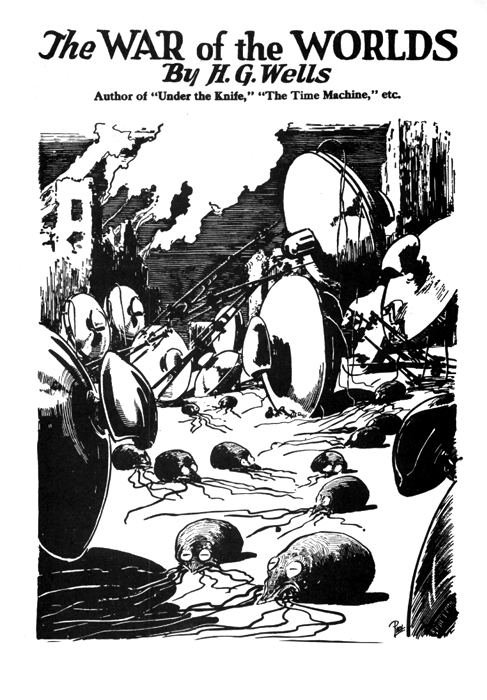
According to some, an estimated 6 million people listened to the show, with an incredible 1.7 million believing it to be true (Lubertozzi & Holmsten, 2005). Some listeners called loved ones to say goodbye or ran into the street armed with weapons to fight off the invading Martians of the radio play (Lubertozzi & Holmsten, 2005). In Grovers Mill, New Jersey—where the supposed invasion began—some listeners reported nonexistent fires and fired gunshots at a water tower thought to be a Martian landing craft. One listener drove through his own garage door in a rush to escape the area. Two Princeton University professors spent the night searching for the meteorite that had supposedly preceded the invasion (Lubertozzi & Holmsten, 2005). As calls came in to local police stations, officers explained that they were equally concerned about the problem (Lubertozzi & Holmsten, 2005).
Although the story of the War of the Worlds broadcast may be funny in retrospect, the event traumatized those who believed the story. Individuals from every education level and walk of life had been taken in by the program, despite the producers’ warnings before, during the intermission, and after the program (Lubertozzi & Holmsten, 2005). This event revealed the unquestioning faith that many Americans had in radio. Radio’s intimate communication style was a powerful force during the 1930s and 1940s.
Radio and Development of Popular Music
One of radio’s most enduring legacies is its impact on music. Before radio, most popular songs were distributed through piano sheet music and word of mouth. This necessarily limited the types of music that could gain national prominence. Although recording technology had also emerged several decades before radio, music played live over the radio sounded better than it did on a record played in the home. Live music performances thus became a staple of early radio. Many performance venues had their own radio transmitters to broadcast live shows—for example, Harlem’s Cotton Club broadcast performances that CBS picked up and broadcast nationwide.
Radio networks mainly played swing jazz, giving the bands and their leaders a widespread audience. Popular bandleaders including Duke Ellington, Benny Goodman, and Tommy Dorsey and their jazz bands became nationally famous through their radio performances, and a host of other jazz musicians flourished as radio made the genre nationally popular (Wald, 2009). National networks also played classical music. Often presented in an educational context, this programming had a different tenor than did dance-band programming. NBC promoted the genre through shows such as the Music Appreciation Hour, which sought to educate both young people and the general public on the nuances of classical music (Howe, 2003). It created the NBC Symphony Orchestra, a 92-piece band under the direction of famed conductor Arturo Toscanini. The orchestra made its first performance in 1937 and was so popular that Toscanini stayed on as conductor for 17 years (Horowitz, 2005). The Metropolitan Opera was also popular; its broadcasts in the early 1930s had an audience of 9 million listeners (Horowitz, 2005).
Regional Sounds Take Hold
The promotional power of radio also gave regional music an immense boost. Local stations often carried their own programs featuring the popular music of the area. Stations such as Nashville, Tennessee’s WSM played early country, blues, and folk artists. The history of this station illustrates the ways in which radio—and its wide range of broadcasting—created new perspectives on American culture. In 1927, WSM’s program Barn Dance, which featured early country music and blues, followed an hour-long program of classical music. George Hay, the host of Barn Dance, used the juxtaposition of classical and country genres to spontaneously rename the show: “For the past hour we have been listening to music taken largely from Grand Opera, but from now on we will present ‘The Grand Ole Opry (Kyriakoudes).’” NBC picked up the program for national syndication in 1939, and it is currently one of the longest-running radio programs of all time.
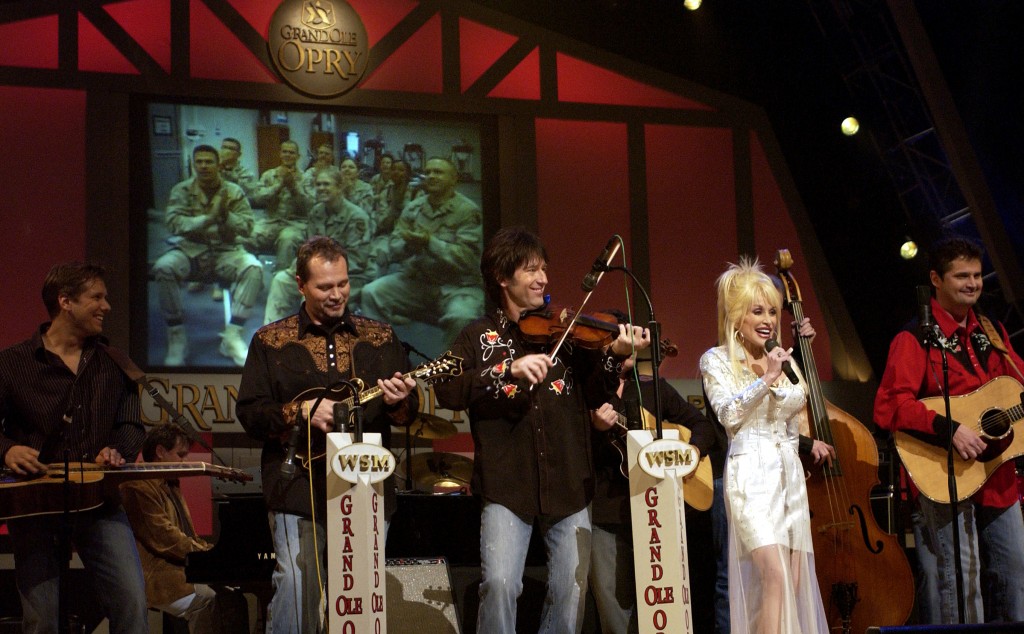
Shreveport, Louisiana’s KWKH aired an Opry-type show called Louisiana Hayride. This program propelled stars such as Hank Williams into the national spotlight. Country music, formerly a mix of folk, blues, and mountain music, was made into a genre that was accessible by the nation through this show. Without programs that featured these country and blues artists, Elvis Presley and Johnny Cash would not have become national stars, and country music may not have risen to become a popular genre (DiMeo, 2010).
In the 1940s, other Southern stations also began playing rhythm and blues records recorded by Black artists. Artists such as Wynonie Harris, famous for his rendition of Roy Brown’s “Good Rockin’ Tonight,” were often played by White disc jockeys who tried to imitate Black Southerners (Laird, 2005). During the late 1940s, both Memphis, Tennessee’s WDIA and Atlanta, Georgia’s WERD were owned and operated by Black individuals. These disc jockeys often provided a measure of community leadership at a time when few Black individuals were in powerful positions (Walker).
Radio’s Lasting Influences
Radio technology changed the way that dance and popular music were performed. Because of the use of microphones, vocalists could be heard better over the band, allowing singers to use a greater vocal range and create more expressive styles, an innovation that led singers to become an important part of popular music’s image. The use of microphones similarly allowed individual performers to be featured playing solos and lead parts, features that were less encouraged before radio. The exposure of radio also led to more rapid turnover in popular music. Before radio, jazz bands played the same arrangement for several years without it getting old, but as radio broadcasts reached wide audiences, new arrangements and songs had to be produced at a more rapid pace to keep up with changing tastes (Wald).
The spotlight of radio allowed the personalities of artists to come to the forefront of popular music, giving them newfound notoriety. Phil Harris, the bandleader from the Jack Benny Show, became the star of his own program. Other famous musicians used radio talent shows to gain fame. Popular programs such as Major Bowes and His Original Amateur Hour featured unknown entertainers trying to gain fame through exposure to the show’s large audience. Major Bowes used a gong to usher bad performers offstage, often contemptuously dismissing them, but not all the performers struck out; such successful singers as Frank Sinatra debuted on the program (Sterling & Kitross).
Television, much like modern popular music, owes a significant debt to the Golden Age of Radio. Major radio networks such as NBC, ABC, and CBS became—and remain—major forces in television, and their programming decisions for radio formed the basis for television. Actors, writers, and directors who worked in radio simply transferred their talents into the world of early television, using the successes of radio as their models.
Radio and Politics
Over the years, radio has had a considerable influence on the political landscape of the United States. In the past, government leaders relied on radio to convey messages to the public, such as President Franklin D. Roosevelt’s “fireside chats.” Radio was also used as a way to generate propaganda for World War II. The War Department established a Radio Division in its Bureau of Public Relations as early as 1941. Programs such as the Treasury Hour used radio drama to raise revenue through the sale of war bonds, but other government efforts took a decidedly political turn. Norman Corwin’s This Is War! was funded by the federal Office of Facts and Figures (OFF) to directly garner support for the war effort. It featured programs that prepared listeners to make personal sacrifices—including death—to win the war. The program was also directly political, popularizing the idea that the New Deal was a success and bolstering Roosevelt’s image through comparisons with Lincoln (Horten).
FDR’s Fireside Chats
President Franklin D. Roosevelt’s Depression-era radio talks, or “fireside chats,” remain one of the most famous uses of radio in politics. While governor of New York, Roosevelt had used radio as a political tool, so he quickly adopted it to explain the unprecedented actions that his administration was taking to deal with the economic fallout of the Great Depression. His first speech took place only 1 week after being inaugurated. Roosevelt had closed all of the banks in the country for 4 days while the government dealt with a national banking crisis, and he used the radio to explain his actions directly to the American people (Grafton, 1999).
Roosevelt’s first radio address set a distinct tone as he employed informal speech in the hopes of inspiring confidence in the American people and of helping them stave off the kind of panic that could have destroyed the entire banking system. Roosevelt understood both the intimacy of radio and its powerful outreach (Grafton, 1999). He was thus able to balance a personal tone with a message that was meant for millions of people. This relaxed approach inspired a CBS executive to name the series the “fireside chats (Grafton, 1999).”
Roosevelt delivered a total of 27 of these 15- to 30-minute-long addresses to estimated audiences of 30 million to 40 million people, then a quarter of the U.S. population (Grafton, 1999). Roosevelt’s use of radio was both a testament to his own skills and savvy as a politician and to the power and ubiquity of radio during this period. At the time, there was no other form of mass media that could have had the same effect.
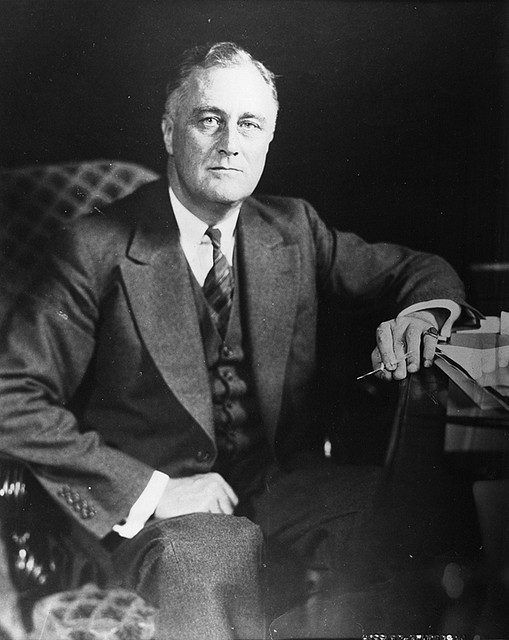
Certainly, radio has been used by the government for its own purposes, but it has had an even greater impact on politics by serving as what has been called “the ultimate arena for free speech (Davis & Owen, 1998).” Such infamous radio firebrands as Father Charles Coughlin, a Roman Catholic priest whose radio program opposed the New Deal, criticized Jews, and supported Nazi policies, aptly demonstrated this capability early in radio’s history (Sterling & Kitross). In recent decades, radio has supported political careers, including those of U.S. Senator Al Franken of Minnesota, former New York City mayor Rudy Giuliani, and presidential aspirant Fred Thompson. Talk show hosts such as Rush Limbaugh have gained great political influence, with some even viewing Limbaugh as the de facto leader of the Republican Party (Halloran, 2009).
The Importance of Talk Radio
An important contemporary convergence of radio and politics can be readily heard on modern talk radio programs. Far from being simply chat shows, the talk radio that became popular in the 1980s features a host who takes callers and discusses a wide assortment of topics. Talk radio hosts gain and keep their listeners by sheer force of personality, and some say shocking or insulting things to get their message across. These hosts range from conservative radio hosts such as Rush Limbaugh to so-called shock jocks such as Howard Stern.
Repeal of the Fairness Doctrine
While talk radio first began during the 1920s, the emergence of the format as a contemporary cultural and political force took place during the mid- to late-1980s following the repeal of the Fairness Doctrine (Cruz, 2007). As you read earlier in this chapter, this doctrine, established in 1949, required any station broadcasting a political point of view over the air to allow equal time to all reasonable dissenting views. Despite its noble intentions of safeguarding public airwaves for diverse views, the doctrine had long attracted a level of dissent. Opponents of the Fairness Doctrine claimed that it had a chilling effect on political discourse as stations, rather than risk government intervention, avoided programs that were divisive or controversial (Cruz, 2007). In 1987, the FCC under the Reagan administration repealed the regulation, setting the stage for an AM talk radio boom; by 2004, the number of talk radio stations had increased by 17-fold (Anderson, 2005).
The end of the Fairness Doctrine allowed stations to broadcast programs without worrying about finding an opposing point of view to balance the stated opinions of its host. Radio hosts representing all points of the political spectrum could say anything that they wanted to—within FCC limits—without fear of rebuttal.
The Revitalization of AM
The migration of music stations to the FM spectrum during the 1960s and 1970s provided a great deal of space on the AM band for talk shows. With the Fairness Doctrine no longer a hindrance, these programs slowly gained notoriety during the late 1980s and early 1990s. In 1998, talk radio hosts railed against a proposed congressional pay increase, and their listeners became incensed; House Speaker Jim Wright received a deluge of faxes protesting it from irate talk radio listeners from stations all over the country (Douglas). Ultimately, Congress canceled the pay increase, and various print outlets acknowledged the influence of talk radio on the decision. Propelled by events such as these, talk radio stations rose from only 200 in the early 1980s to more than 850 in 1994 (Douglas).
Although political programs unquestionably rule AM talk radio, that dial is also home to a kind of show that some radio listeners may have never experienced. Late at night on AM radio, a program airs during which listeners hear stories about ghosts, alien abductions, and fantastic creatures. It’s not a fictional drama program, however, but instead a call-in talk show called Coast to Coast AM. In 2006, this unlikely success ranked among the top 10 AM talk radio programs in the nation—a stunning feat considering its 10 p.m. to 2 a.m. time slot and bizarre format (Vigil, 2006).
Originally started by host Art Bell in the 1980s, Coast to Coast focuses on topics that mainstream media outlets rarely treat seriously. Regular guests include ghost investigators, psychics, Bigfoot biographers, alien abductees, and deniers of the moon landing. The guests take calls from listeners who are allowed to ask questions or talk about their own paranormal experiences or theories.
Coast to Coast’s current host, George Noory, has continued the show’s format. In some areas, its ratings have even exceeded those of Rush Limbaugh’s (Vigil, 2006). For a late-night show, these kinds of high ratings are rare. The success of Coast to Coast is thus a continuing testament to the diversity and unexpected potential of radio (Vigil, 2006).
On-Air Political Influence
As talk radio’s popularity grew during the early 1990s, it quickly became an outlet for political ambitions. In 1992, nine talk show hosts ran for U.S. Congress. By the middle of the decade, it had become common for many former—or failed—politicians to attempt to use the format. Former California governor Jerry Brown and former New York mayor Ed Koch were among the mid-1990s politicians that had AM talk shows (Annenberg Public Policy Center, 1996). Both conservatives and liberals widely agree that conservative hosts dominate AM talk radio. Many talk show hosts, such as Limbaugh, who began his popular program 1 year after the repeal of the Fairness Doctrine, have made a profitable business out of their programs.
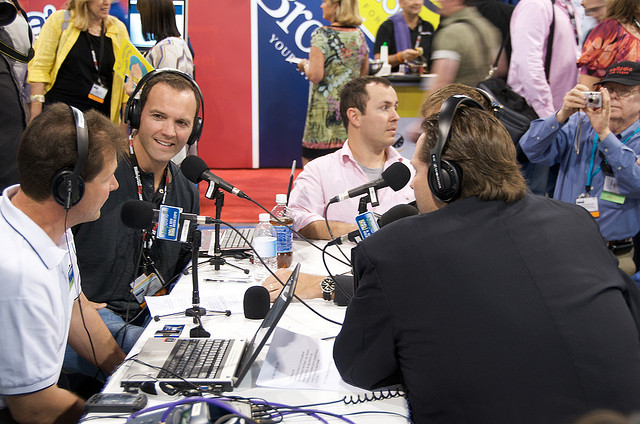
During the 2000s, AM talk radio continued to build. Hosts such as Michael Savage, Sean Hannity, and Bill O’Reilly furthered the trend of popular conservative talk shows, but liberal hosts also became popular through the short-lived Air America network. The network closed abruptly in 2010 amid financial concerns (Stelter, 2010). Although the network was unsuccessful, it provided a platform for such hosts as MSNBC TV news host Rachel Maddow and Minnesota Senator Al Franken. Other liberal hosts such as Bill Press and Ron Reagan, son of President Ronald Reagan, have also found success in the AM political talk radio field (Stelter, 2010). Despite these successes, liberal talk radio is often viewed as unsustainable (Hallowell, 2010). To some, the failure of Air America confirms conservatives’ domination of AM radio. In response to the conservative dominance of talk radio, many prominent liberals, including House Speaker Nancy Pelosi, have advocated reinstating the Fairness Doctrine and forcing stations to offer equal time to contrasting opinions (Stotts, 2008).
While the First Amendment of the U.S. Constitution gives radio personalities the freedom to say nearly anything they want on the air without fear of prosecution (except in cases of obscenity, slander, or incitement of violence, it does not protect them from being fired from their jobs when their controversial comments create a public outrage. Many talk radio hosts, such as Howard Stern, push the boundaries of acceptable speech to engage listeners and boost ratings, but sometimes radio hosts push too far, unleashing a storm of controversy.
Making (and Unmaking) a Career out of Controversy
Talk radio host Howard Stern has managed to build his career on creating controversy—despite being fined multiple times for indecency by the FCC, Stern remains one of highest-paid and most popular talk radio hosts in the United States. Stern’s radio broadcasts often feature scatological or sexual humor, creating an “anything goes” atmosphere. Because his on-air antics frequently generate controversy that can jeopardize advertising sponsorships and drive away offended listeners—in addition to risking fines from the FCC—Stern has a history of uneasy relationships with the radio stations that employ him. In an effort to free himself of conflicts with station owners and sponsors, in 2005 Stern signed a contract with Sirius Satellite Radio, which is exempt from FCC regulation, so that he can continue to broadcast his show without fear of censorship.
Stern’s massive popularity gives him a lot of clout, which has allowed him to weather controversy and continue to have a successful career. Other radio hosts who have gotten themselves in trouble with poorly considered on-air comments have not been so lucky. In April 2007, Don Imus, host of the long-running Imus in the Morning, was suspended for racist and sexist comments made about the Rutgers University women’s basketball team (MSNBC, 2007). Though he publicly apologized, the scandal continued to draw negative attention in the media, and CBS canceled his show to avoid further unfavorable publicity and the withdrawal of advertisers. Though he returned to the airwaves in December of that year with a different station, the episode was a major setback for Imus’s career and his public image. Similarly, syndicated conservative talk show host Dr. Laura Schelssinger ended her radio show in 2010 due to pressure from radio stations and sponsors after her repeated use of a racial epithet on a broadcast incited a public backlash (MSNBC, 2007).
As the examples of these talk radio hosts show, the issue of freedom of speech on the airwaves is often complicated by the need for radio stations to be profitable. Outspoken or shocking radio hosts can draw in many listeners, attracting advertisers to sponsor their shows and bringing in money for their radio stations. Although some listeners may be offended by these hosts and may stop tuning in, as long as the hosts continue to attract advertising dollars, their employers are usually content to allow the hosts to speak freely on the air. However, if a host’s behavior ends up sparking a major controversy, causing advertisers to withdraw their sponsorship to avoid tarnishing their brands, the radio station will often fire the host and look to someone who can better sustain advertising partnerships. Radio hosts’ right to free speech does not compel their employer to give them the forum to exercise it. Popular hosts like Don Imus may find a home on the air again once the furor has died down, but for radio hosts concerned about the stability of their careers, the lesson is clear: there are practical limits on their freedom of speech.

